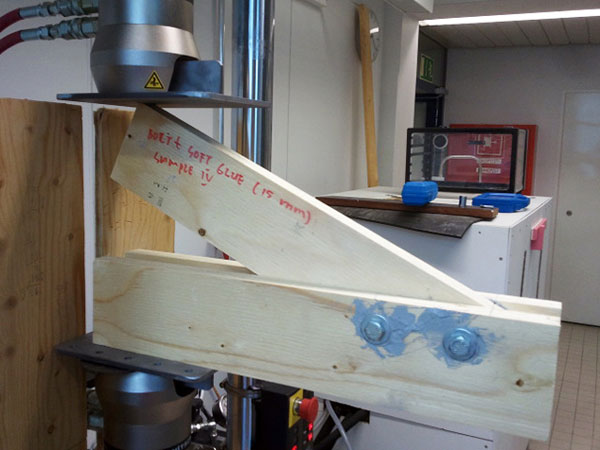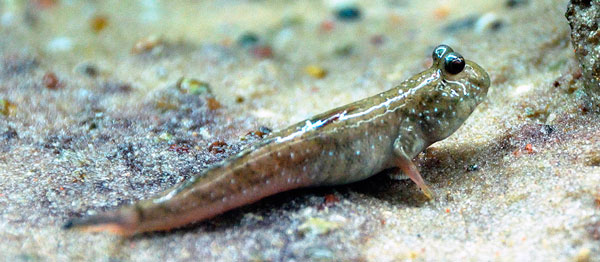Parvez Alam’s research is bioinspired – meaning that he looks in the natural world for the structures and characteristics of materials. Marine organisms seem to be the dominant source of inspiration.
Marcus Prest
Coral and sponge mimetics for advanced composites
Environmentally-friendly materials are currently an object of great interest within green industrial engineering, but the development of environmentally-friendly green materials has not yet managed to achieve products that would either improve on or be comparable to the performance of synthetic materials. Corals and sponges form hard, rigid and strong skeletons that support and protect the soft organism within it. By imitating corals and sponges Alam thinks it is possible to attain the standards of synthetic materials, and sometimes even exceed them. Alam regards coral and sponge mimetics as a realistic means of developing genuinely ‘green’ materials.
Bioinspired biomaterials for healing wounds and growing skeleton parts
A number of biological materials have a basic biocompatibility with the human body. Many of these materials can easily be bioactivated; that is, made reactive to the cells in the new environment into which the material is introduced. Many of the materials are also developed for integration with cells and are therefore compatible at the cellular level. Some are also able to eliminate harmful strains of bacteria and can improve blood coagulation and cell production. Many of the biological materials also have mechanical characteristics that are compatible with human tissue and human bone. The research group that Alam is cooperating with studies the development and production of biological materials for optimising the wound-healing process and the development of high-performance, environmentally-friendly biomaterials originating in nature. The basic materials include bacteriological nanopulp (from the bacteria Acetobacter xyllinum) and natural biosilica (diatoms).
Research on diatoms
Transport agents for pharmaceuticals: Concepts that Alam’s silica group has discovered in diatoms have given us new ways of delivering pharmaceuticals. One of the advantages that have been discovered is the energetic stability of pharmaceuticals that are surrounded by, rather than immersed in, a transport substance, and the objective of Alam’s group is to create a degradable skeleton which forms a capsule around the pharmaceutical substance. Skeletons that occur in nature are optimally adjusted to the molecules or cells that they surround. Alam’s group is trying to emulate that same process.
Biotechnology: Biotechnological solutions for developing glass surfaces around natural fibres and other materials. The biotechnology researchers whom Alam collaborates with are exploring and trying to biomimic the chemical and physical structures of the crab species Naxia tumbida in order to find suitable fibre treatments that would enable diatoms to fasten onto the material. Alam’s group is developing specialised reactors in order to improve the way silicon algae arrange themselves onto fibre surfaces. The aim is to develop high-performance natural fibre composites.

A stress test that imitates the wing mechanism of a dragonfly. Photo: Parvez Alam.
Building engineering inspired by the mechanism in dragonfly wings
Alam’s group has studied the morphology and mechanics of the structures of several different types of dragonflies from various parts of the world (including Finland – where native dragonflies have unique development characteristics). Based on their insights into the function of the joints attaching a dragonfly’s wings to its body, Alam’s group has designed models for durable joining mechanisms to be used in the building of earthquake-safe houses.

Mudskipper. Photo: Wikimedia Commons.
Amphibious fish (mudskippers) – biomechanics and robotics
Mudskippers are strange fish that can climb trees and have even been spotted sitting on tree branches. They are capable of breathing above water, creating a water bubble for oxygen diffusion and transporting the contents through their gills. Alam’s mudskipper group has studied the fish’s movement patterns, slime secretion, clinging capacity, morphology and biomechanics in order to design a robot able to mimic the characteristics of the fish. The first two steps of characterisation have been done – what remains for the group is to understand the musculature and its lines of movement before they can start constructing robot functions.
Bioadhesive technologies
Primarily marine bioadhesives and cobweb-based bioadhesives. There are specific protein structures and amino-acid sequences (and alternatively just specific amino-acids) that give bioadhesives based on proteins a very strong adhesive ability. Alam’s group has already succeeded in emulating the adhesive qualities in the flagelliform type of cobweb and is currently exploring polysaccharide-based slime as well as extracellular polymeric substances (EPS) that have a very strong adhesive ability.
Cobweb research
Eco-composites: Development of green composites based on cobweb biology. Includes research into trying to breed a venomous and aggressive spider species in East Africa. It is commonly believed that spiders cannot be bred since they have a cannibalistic nature – but Alam’s spider group thinks they have found a species which might be successfully bred. Alam returned to East Africa in August to see how the spider breeding is advancing. The research of the cobweb group also includes the study of how the Bombyx mori larvae degummify and regummify their cocoons through low-energy processes and with a minimal quantity of chemicals. The larvae use sericin to glue back the fibres of the cocoon weave to a usable form.
Biomechanics: The biomechanics of cobwebs is a fundamentally important research area in order to understand how the web should be copied for use in synthetic materials. At the moment Alam’s group is studying the semi-crystalline molecules of cobwebs – an area which has so far hardly been studied at all. Alam believes the semi-crystalline molecules might be the key to understanding why a cobweb has such an enormous ability to absorb energy.
Synthetic biology: Alam’s group combines amino-acid sequences with various types of natural webs to develop a ‘super web’ with combined qualities from different types of cobweb (there are at least seven different types of cobweb).


